SPECIAL REPORT: Street Style
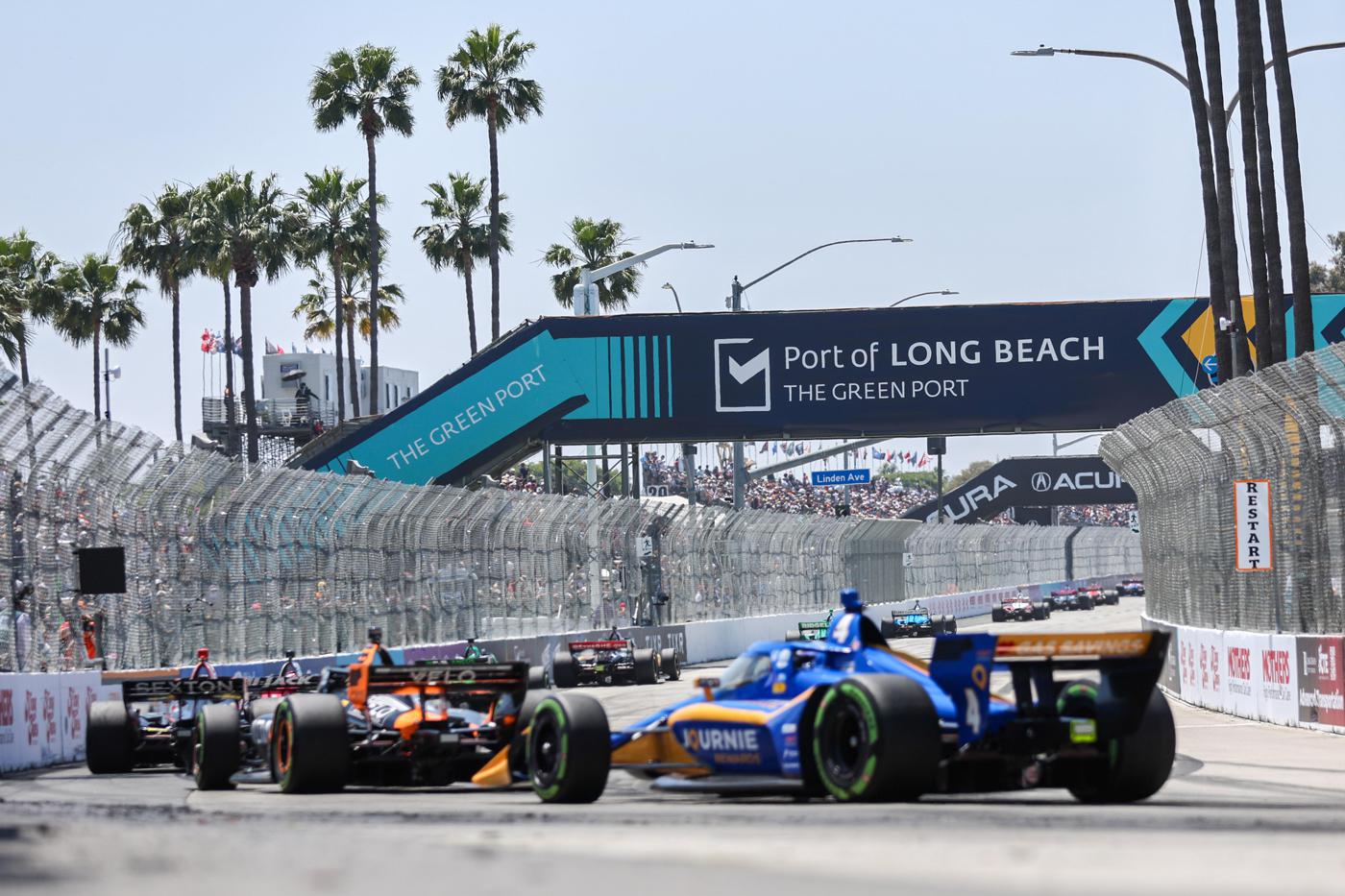
Race promoters explain the massive logistical operation required to bring a successful street race to life.
Legendary race circuits like Daytona International Speedway and Indianapolis Motor Speedway are considered hallowed grounds in the world of motorsports, but these are not venues that new fans stumble upon. For expanding the reach of motorsports, it helps to hit the streets.
“Street course racing is where you can take the race to the people,” said Kim Green, chairman and CEO of Green Savoree Racing Promotions (GSRP), Carmel, Indiana. “It becomes more than just the race; it becomes an event if you can do it properly.”
The spectacle of street course races is undeniable. The roar of engines echoing off buildings, the heightened sense of speed on narrow city streets—it’s an exhilarating sensory experience. Most importantly, the location appeals to residents looking to experience a unique event, but who wouldn’t otherwise go out of their way to attend a race.
Golden Rule of Street Courses
When we spoke to Green, his team had finished teardown of the 2024 Firestone Grand Prix of St. Petersburg, the season-opener for the NTT IndyCar Series held in early March.
With 20 years of experience in St. Petersburg, Green understands the intricacies of putting on a proper street race, from the initial planning stages to removing the final concrete block. Through that experience, he has learned one golden rule for success on the streets.
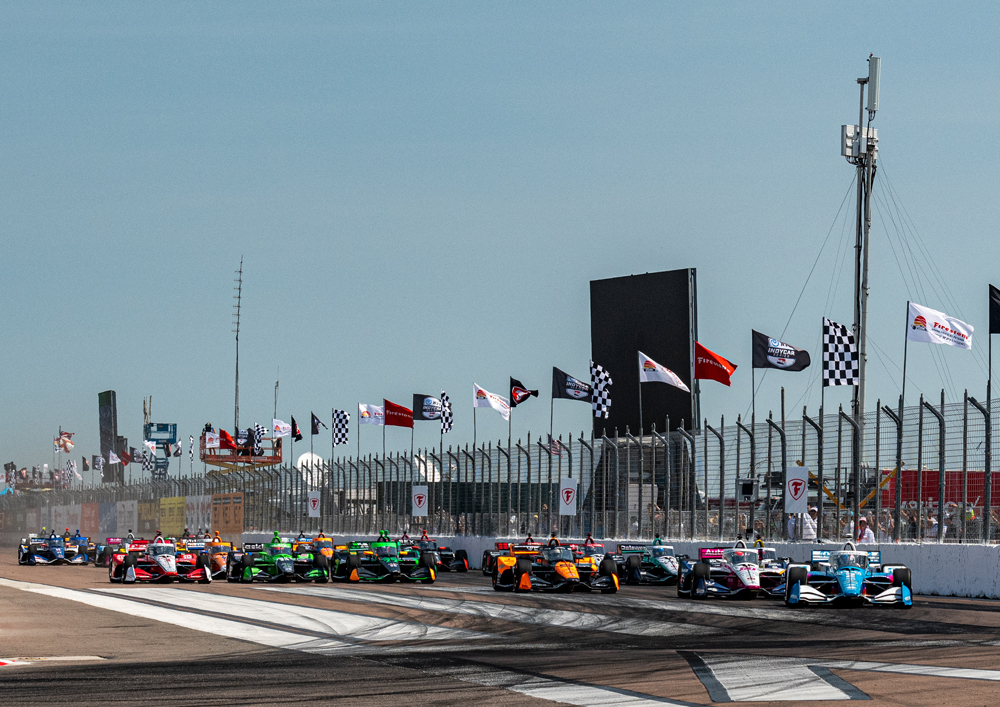
Minimum disruption to the host city is a golden rule of street-course racing. “Get in, get it built, have the event, get out, and let the city get back to its normal, busy spring,” said Kim Green about putting on the Grand Prix of St. Petersburg
“We try to be an absolute minimum interruption to the city,” said Green. “Get in, get it built, have the event, get out, and let the city get back to its normal, busy spring.”
Street circuit races can’t happen without maintaining a positive relationship with the host city. After all, most city officials are naturally averse to disrupting everyday life and businesses for their residents. Good relationships and logistical efficiencies can help alleviate those concerns.
“We have a 65-day window if we need to use it,” said Green. “But since [St. Petersburg] has gotten busier, the less time we can be interrupting, then we are being a better community partner.”
On the West Coast is one of America’s most legendary street races—the Acura Grand Prix of Long Beach—which in 2025 will mark its 50th year. Yet the race continues to evolve to accommodate the growth of its host city.
“The amount of time that we have to build and install the safety system has changed over the years, especially the last five years,” said Dwight Tanaka, director of operations of the Grand Prix Association of Long Beach, Long Beach, California. “Our installation time frame has been reduced [to 50 days], and our removal time frame has been reduced [to about two weeks] to lessen the impact to local businesses.”
While the Grand Prix Association of Long Beach has decades of experience running its street race, NASCAR is on the other end of the spectrum. The series just ran its very first street race in 2023 with the Chicago Street Race.
“It was the first time either [NASCAR or Chicago] was doing a street race, so there was a lot of learning and a lot of education for both sides to just understand the process and even talk about each other’s industry,” said Julie Giese, president of the Chicago Street Race, Chicago, Illinois.
Starting with a blank slate and questions from local residents, Giese and her team went to work. “A priority for us from day one has been to minimize disruptions to local residents.”
Beyond reducing construction time and street closures, Chicago’s dense urban footprint created an additional consideration for NASCAR. “We have residential buildings right on the footprint, so sound is something that we are very cognizant of,” said Giese. “We had to be mindful of the amount of on-track time cars are out there. Also, our cars run mufflers for this event, both Saturday’s and Sunday’s events.”
The partnership between NASCAR and Chicago might seem unlikely. However, the idea of stock cars thundering down Michigan Avenue was born in the virtual world.
“Several years ago, our leadership team in conjunction with the Chicago Sports Commission brought iRacing to Chicago to actually scan the streets of the course,” said Giese. “They created a virtual Chicago Street Race that our drivers competed on in July 2021, and it was a great proof of concept. Our drivers told us the course was competitive, and city officials saw the tremendous potential from an exposure and promotion perspective for the city.”
To assist with transforming a virtual race concept into a real-world street race in Chicago, NASCAR contracted Four Leaf Productions, an Austin, Texas-based event production company with extensive experience organizing large events in Chicago.
“They really were a tremendous resource for us on what can and can’t work in Grant Park, and how we take this amazingly beautiful location and make it work for a music and racing festival,” said Giese.
Getting the right partners in place is the first challenge, but the planning stage is where everything comes together.
Grand Plan
To get a sense of the resources it requires to build a street course, consider these raw numbers from the Grand Prix of St. Petersburg.
The 1.8-mile, 14-turn course requires placing nearly 2,000 steel-reinforced concrete blocks, weighing a combined 20 million pounds. There is 18,000 feet of panel fencing to secure the concrete barriers and 25,000 feet of chain link spectator fencing to line the track. Five bridges and five race paddocks must be set up. Altogether, the build enlists approximately 300 workers.
It’s a giant logistics puzzle, but one the GSRP team solves through a detailed plan carefully coordinated with city officials.
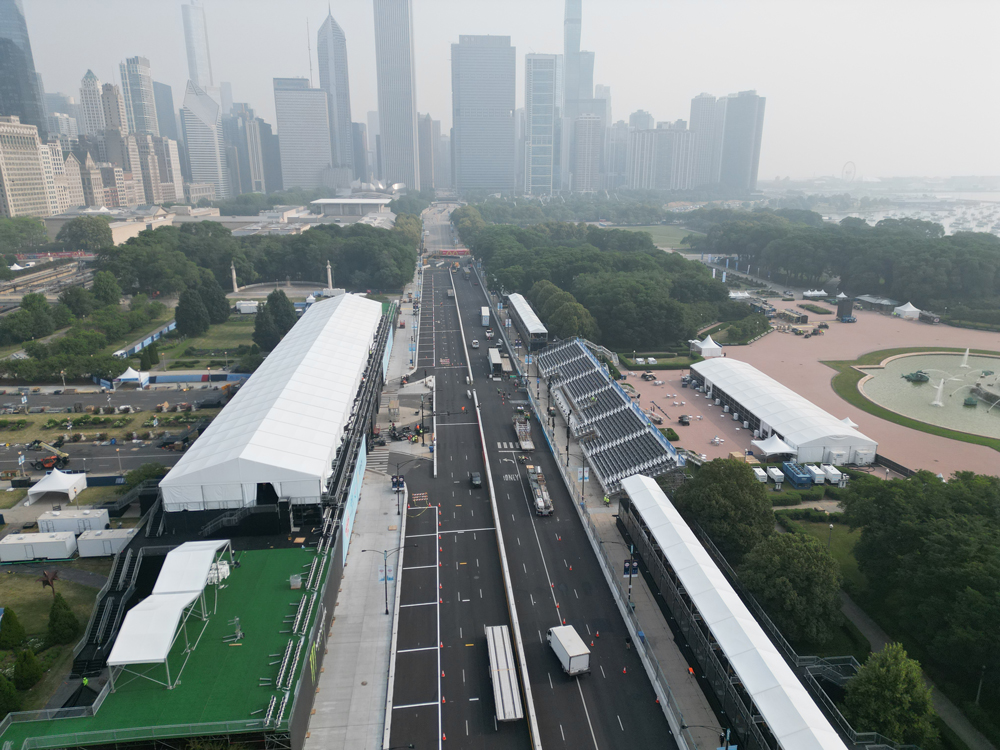
“There was a lot of learning and a lot of education for both sides to just understand the process,” said Julie Giese about staging NASCAR’s first Chicago Street Race in 2023. Now, “there’s definitely a really positive momentum and positive sentiment around the event, which has been fun.”
“There’s a set plan going into our build,” Green said. “We lay out a document that goes to the city, and we talk through several times before we get to a finalized plan. The city then distributes that build plan to all the businesses that surround the race event.”
The plan revolves around a precise and efficient build schedule. Green said his team puts down roughly 200 concrete blocks a day during the build, moving up to 500 blocks during a single teardown day.
“We follow a day-by-day plan of where we’re going to start the race track build, and then our goal each day of how many big concrete blocks and fence pieces are going to get put in place.” Assuming the build team meets its goal for each day, completing the build on schedule “becomes a mathematical thing, while also making sure you have time up your sleeve in case there’s a rainy day.”
Not only did Green’s team complete the build on schedule, but it managed to meet the challenge of condensing the entire install and teardown window to only 27 days—an event record.
“Immediately once the checkered flag drops on Sunday, we start taking things down. Actually, the race track fence, blocks, and tires were all back in storage one week later.”
GSRP has improved efficiency by controlling more variables—starting with its track crew. “A lot of the track build work is actually our team that comes in from Mid-Ohio, which is our permanent track near Columbus, Ohio,” said Green. “We have staff that are very familiar with [the build], and that really makes it go quite quickly.”
Sourcing experienced workers from GSRP’s other venues has paid dividends. “We probably control the cost better than we ever have because we’re using our build team.”
Race organizers in Long Beach use a similar approach, where Tanaka estimates they own “approximately 90% of the equipment.” Beyond owning the equipment, they’ve also found success via continuity of their team.
“We try to use the same team we’ve used in the past so we’re not reinventing the wheel,” said Tanaka. “We’ve had this construction schedule in place for the 46 years I’ve been here.”
The benefit of decades of experience is unparalleled, but a construction schedule is only part of the equation. Building a consistent track and supporting structures each year requires detailed information of exactly where structures should be located—requiring both old- and new-school technology.
Tanaka said the team utilizes “aerial photos, marks on the ground, and now with GPS, you can pinpoint where things are supposed to go, so we can build the track and structure in the same location as the previous year.”
Planning for the race begins more than a full year in advance.
“I’ve already started planning for our 50th anniversary event in 2025,” said Tanaka. “Every race I’ve been involved with, the pre-planning starts prior to the [previous] year’s race. We’ve already met with the city regarding our race in 2025.”
After five decades, the Grand Prix of Long Beach is a staple in the city. While most street course races have to adjust to accommodate construction or development, the opposite is true in Long Beach.
“Our interests are understood, and basically all the construction and development around the race track area has to be planned around the race itself,” said Tanaka. “Our partnership with the city of Long Beach has made it a whole lot easier for us.”
Clear Communication
When planning a first-time event, the unknown is one of the biggest variables. NASCAR and Chicago officials do not have the benefit of 50 years of collaborative experience. Instead, they are leaning on communication and education to bridge the gap.
“I think the biggest challenge and biggest opportunity for us last year was education about the event,” said Giese. “What is it? How does it come together? How does it impact residents and businesses? NASCAR had never done it before, so it was just a little bit of an unknown.”
Any large-scale event in downtown Chicago is disruptive, but that makes communication and community outreach of utmost importance. For Giese and NASCAR, their toughest job wasn’t figuring out the logistics of placing concrete barriers but rather explaining the benefits of an event that had never happened before.
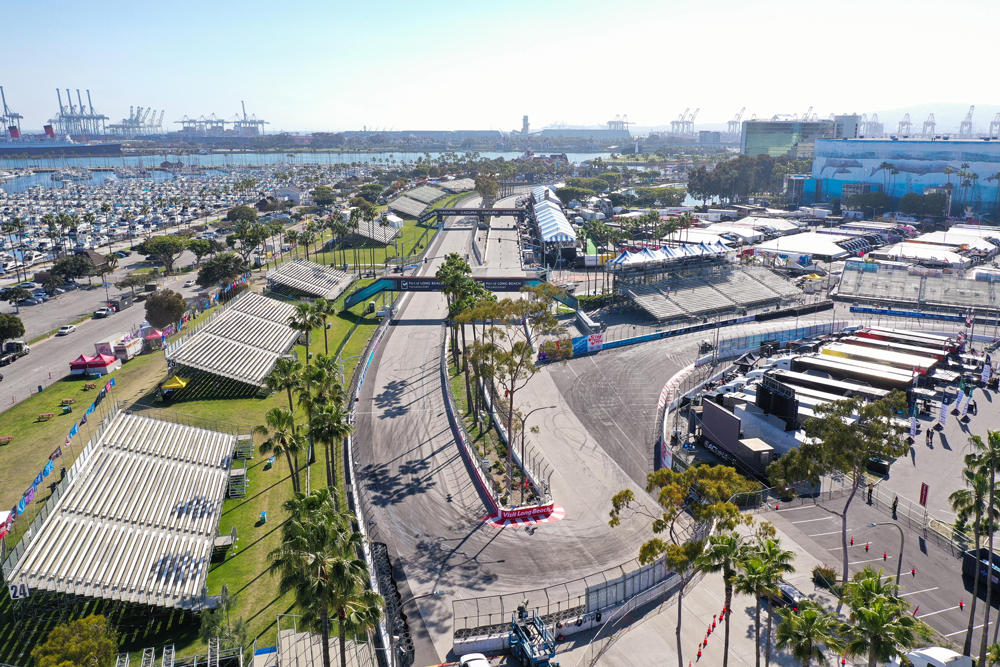
Even after five decades of experience, the Grand Prix Association of Long Beach is still refining its operation, said Dwight Tanaka. In recent years, the time frame for track installation and removal has been shortened “to lessen the impact to local businesses.”
“It’s hard to explain that we had the virtual simulation, because that only goes so far,” said Giese. “It’s virtual versus what they would see in reality.”
Without “reality” to back up her pitch, Giese participated in more than 150 community meetings in the leadup to last year’s inaugural race. The sessions involved everything from spreading awareness about the event and what residents could expect, to answering questions and listening.
Giese would often be the lone voice trying to assuage the community’s concern. But once the Chicago Street Race finally became a reality last July—even overcoming historic rainfall during race weekend—residents began to embrace the race.
“When I’m doing similar meetings this year, there are so many other voices in the room that are explaining it with enthusiasm and excitement,” said Giese. “There’s definitely a really positive momentum and positive sentiment around the event, which has been fun. Not like last year, when I was truly the only voice explaining what it was.”
Beyond meeting with residents, community engagement has been a big focus for Giese and her team. “Being in the neighborhoods and doing different giveback programs is really important to us.”
This has involved everything from donating bicycles to local elementary schools to providing teens with a unique opportunity to be involved in race weekend.
“After School Matters is an amazing program just down the street from the event footprint,” said Giese. “We have [local teens] working on graphic design for a screen that will wrap certain areas of the footprint.”
From consistent communication to local outreach, it is all part of NASCAR’s effort to be a good community partner and build goodwill toward its new event.
Of course, this approach is not exclusive to new events. While Tanaka and his team may not have to explain the impacts of a street race to Long Beach residents, they still need to make sure everyone’s interests are aligned.
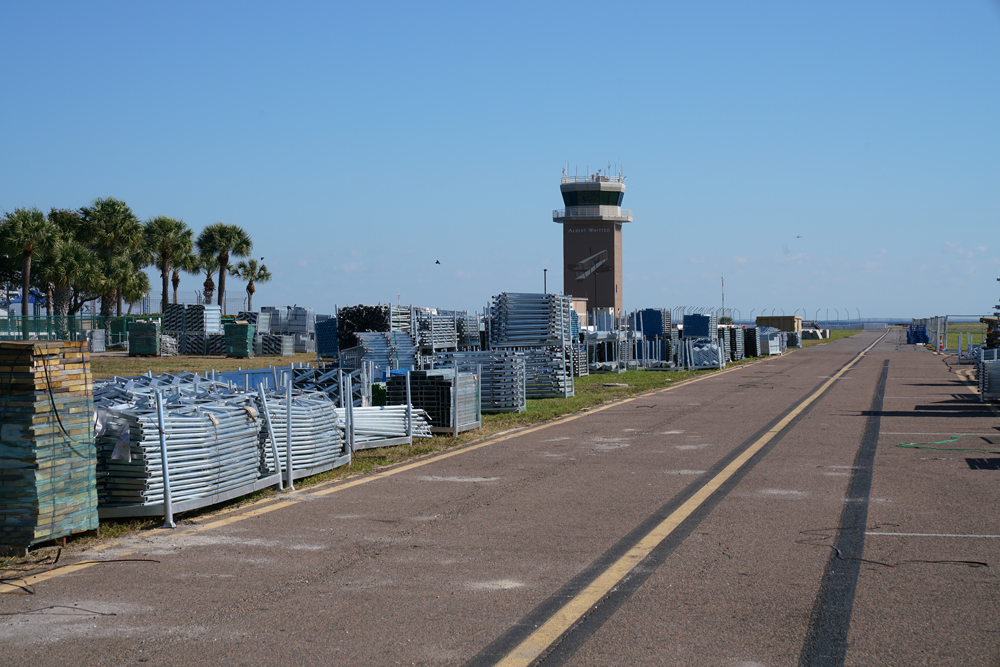
Green Savoree Racing Promotions completed install and teardown of the 2024 Grand Prix of St. Petersburg in only 27 days. The build involves approximately 2,000 steel-reinforced concrete blocks, 18,000 feet of panel fencing, and 25,000 feet of chain link spectator fencing.
“We have a stakeholder group that consists of local businesspeople, the city, and the convention center,” said Tanaka. “We meet with them and lay out the plans. We forewarn them of things that may impact their businesses. The thing we have going for us, more than other special events here or in other cities, is that we’ve been here for many years.”
Experience and legacy matter when it comes to getting approvals and ensuring events run smoothly. While the track building operation is down to an exact science in Long Beach, Tanaka continues to refine other areas of the event by collaborating with promoters, including those not involved in motorsports.
“We have dialogue with other promoters and share [vendor] information about who’s good and who’s not-so-good,” said Tanaka. “I share my information with a lot of promoters, not only in motorsports but other special events such as music festivals, parades, and so forth.”
The constant pursuit of improvement is a hallmark of long-term successful events. Beyond detailed planning and extensive communication, the ability to learn from past events and apply those lessons going forward is essential.
Learning and Growing
Back in St. Petersburg, Green categorized the last three years as “very, very strong years.” The event has grown to the point where it is simply known as the “Grand Prix” to locals—everyone knows about it. This is the result of constant improvement.
When Green first ran the event in 2005, he was also a co-owner of Andretti Green Racing—a four-car IndyCar team. That first race provided a mixed result for Green.
“The first year was a huge challenge and a financial disaster as far as the event goes,” said Green. “The race was great for [our team] as we finished 1-2-3-4, but we learned a lot about how to put on a street race.”
Green credits his business partner, Kevin Savoree, for helping turn the event around through “controlling the budgeting and costs.” Since that initial race in 2005, the GSRP team has diligently improved the event—both from a fan and operations standpoint.
Post-event reflection sessions turn up a variety of improvement areas, everything from macro decisions involving which support series to invite, to micro issues such as how to optimize trash collection. During race weekend, there is a control center to immediately respond to any issue, big or small.
“We want the public to see nothing and we want the media to see nothing but good stuff,” said Green. “We handle all the little stuff behind the scenes and just try to make the event run smoothly.”
Keeping tabs on pricing is one of the biggest opportunities for yearly improvements. “Like any business where you have contractors, it’s always good due diligence to see what’s out in the market and make sure you’re getting the right price,” Green said.
In fact, recent increases in grandstand rentals led to GSRP purchasing grandstands from overseas to better control costs. Beyond cost savings, the new grandstands also improved the fan experience via increased leg room.
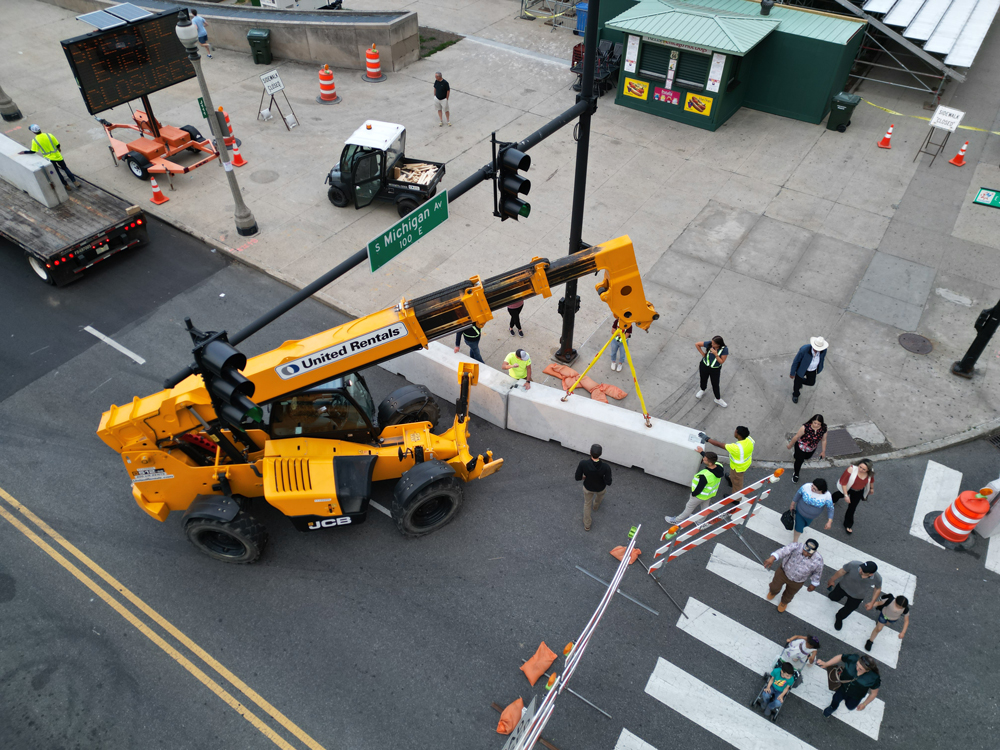
“At the end of the day, we are creating this large event on a very temporary basis,” said Julie Giese of the Chicago Street Race. “But then 10 days after the event, you don’t even know that it happened.”
The business of street course racing is about more than just racing.
“We try to put fans first,” said Green. “After all, we really are in the entertainment business, so we want to give them good value. Our goal is to make sure that everyone who has been to race weekend wants to come back the next year.”
The objective is to cultivate a loyal fan base that turns race weekend into a yearly tradition. Add in logistical efficiency, strong community support, and superb cost controls—that’s the recipe for a street race with longevity tallied in decades, not just years.
Though for a fresh event like the Chicago Street Race, the lessons and adjustments following the inaugural race are especially important. One of Giese’s biggest takeaways goes back to minimizing interruption.
In 2023, the course build and teardown were completed during a 25-day window. However, Giese’s team found inefficiencies in their post-event analysis. For 2024, that window will be reduced to only 19 days.
“We learned that we can be way more efficient by not doing the overnight barrier install and reopening the next day with lane closures,” said Giese. “Instead, we can tighten the disruptions to residents by just waiting to put those barriers in until closer to the event and focusing on full street closures.”
Their team is paying close attention to reducing impact on major streets around downtown. For example, they cut down the impact to Columbus Drive from 20 days last year to a planned 12 days this year.
“For us to be able to take eight days off of the impact to [Columbus Drive] was significant, and we did that in a number of different areas, making sure wherever we can tighten it, we did.”
The other major adjustment from last year involved the distance of the race itself. This year, drivers in the NASCAR Xfinity Series race on Saturday will now race 50 laps—down from 55—while the Cup Series drivers will complete 75 circuits—down from 100. Last year’s lap counts were based on simulation data, but real-world data suggested an adjustment was necessary.
“Using data from last year’s race, we shortened the races to make sure that we’re optimizing the broadcast windows and also being mindful of that track time commitment we have to residents,” explained Giese.
With one year under their belt, Giese’s team will continue to refine the event and look to improve the experience for everyone involved. It’s a massive undertaking that takes countless hours of planning and preparation, but as quickly as a street course race appears, it disappears even faster.
“At the end of the day, we are creating this large event on a very temporary basis,” said Giese. “But then 10 days after the event, you don’t even know that it happened.”
For Giese, Green, and Tanaka—they will already be hard at work behind the scenes. Next year’s race is just around the corner.
Special Report: Long Beach Build
Watch the streets of Long Beach, California, be transformed into one of the ultimate American motorsports venues in this time-lapse video from Dinner with Racers and courtesy of the Acura Grand Prix of Long Beach.
SOURCES
Chicago Street Race
nascarchicago.com
Grand Prix Association of Long Beach
gplb.com
Green Savoree Racing Promotions
greensavoree.com
 MEMBERSHIP LOGIN
MEMBERSHIP LOGIN JOIN PRI
JOIN PRI


